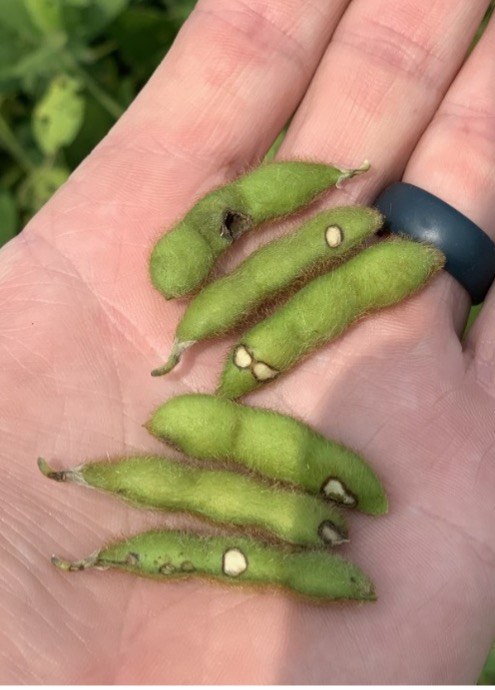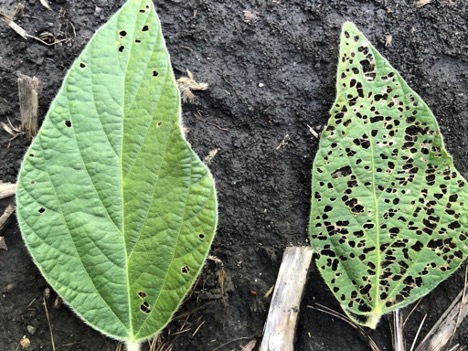In late August of 2020 I started to see a disturbing trend. Bean Leaf Beetle (BLB) populations were well above previous years. In East Central Illinois, we continued to monitor these populations, but they remained below any threshold worthy of action. With drought-like conditions, no rain in the forecast and sub $8.50 soybeans on the board of trade, many growers would not have been excited to make a late aerial application for a crop that was headed in the wrong direction. Unfortunately, many growers in geographies along the U.S. Route 24 and north of that, had no choice but salvage their soybeans from very heavy, late pod feeding and defoliation.
To understand why they became such an issue in 2020 we must first look at the life cycle of the BLB and the environmental conditions that played into their higher populations in 2020. Unlike a Corn Rootworm Beetle, BLB overwinters as an adult. The adults overwinter in debris or cover and usually emerge in early May. They will feed first, then mate. The females will lay approximately a dozen eggs at the base of the plant. In one to three weeks, they will emerge as larvae, but the larval feeding on roots will not cause much damage. They will pupate in the soil and adults will emerge in early to mid-July.
In Illinois, we will have at least two generations of BLB. The second generation will emerge in late August to early September. Overall, populations can be greatly influenced by winter conditions and the beetle’s ability to survive. Survival for overwintering beetles is governed by the number of days accumulated below the temperature of 14o F (-10o C). Studies by Lam and Pedigo found that more than 50 percent of bean leaf beetles can survive for hundreds of hours at 23o F (-5o C); however, most beetles died by 15 minutes at 14o F (-10o C).*
If we rewind back to 2019, we know that late planting and early wet conditions in the fall delayed many growers from doing any tillage work for 2020. That meant that many
fields would be no-till and provide a great overwintering environment. The 2019 winter was extremely mild as well, and likely failed to cause widespread mortality of the BLB populations. These factors could likely have played into the numbers we saw in the northern part of the state.
Moving forward in 2021, growers need to be aware of winter temperatures and estimated survival of BLB. Monitoring populations early will also help growers gauge potential late season issues. Using a seed treatment that includes an insecticide is highly recommended in these at-risk areas. Early planted soybean fields would also be at high risk since they would be the first available food source. Growers who apply a fungicide and insecticide at R2/3 should use a good insecticide with residual activity to protect pods. Late defoliation usually does not cause yield damage, but any feeding on pods can have detrimental effects on the seed development.
“We saw some of the biggest fungicide responses I’ve ever seen this year, and a significant part of that was a result of the residual insecticide protecting from bean leaf beetles,” said Jason Carr, TDR Bayer Crop Science.

Sprayed vs. unsprayed strip (Delaro + leverage 360)




 and then
and then